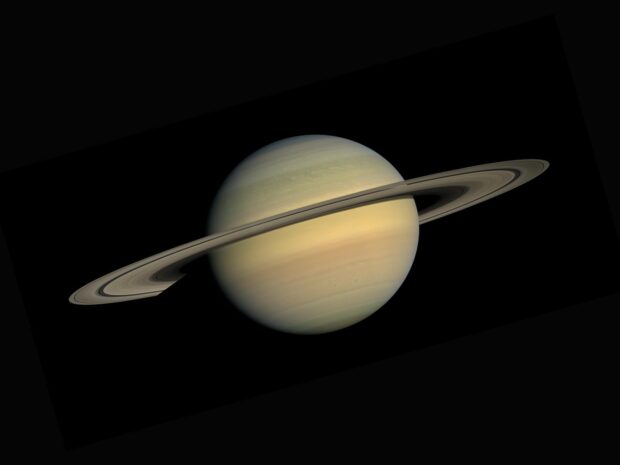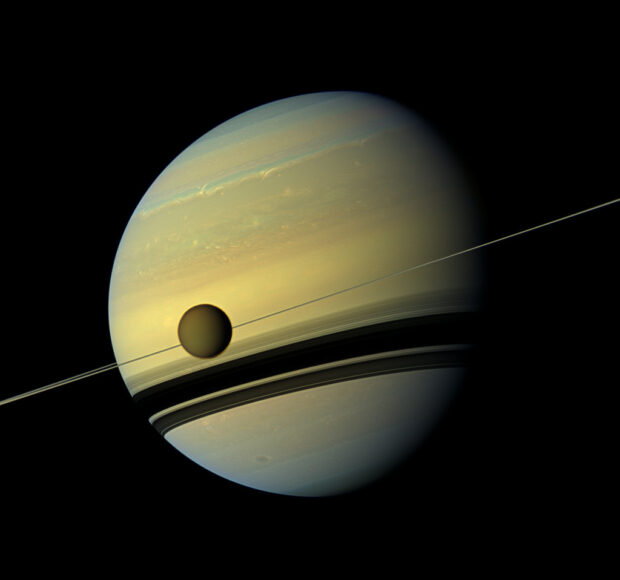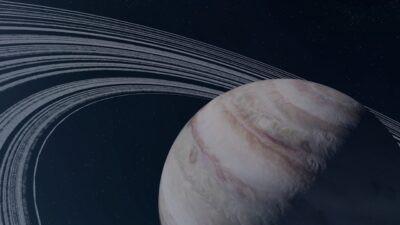Picture this: a crisp, clear night sky, with countless stars glistening overhead. You look up with your telescope, searching for Saturn, and all of a sudden, it dawns on you that something is amiss. Saturn’s rings, those magnificent hoops that have fascinated astronomers for centuries, are nowhere to be found. It’s not a trick of your imagination, but a cosmic occurrence set to unfold in 2025. Yes, you read that right – the rings of Saturn are disappearing from view, and they’ll be nearly invisible from Earth in the next several months during the Saturnian equinox.
The Magic of Saturn’s Rings

Saturn, the majestic gas giant that’s the second-largest planet in our solar system (Jupiter is the biggest), has always been synonymous with its stunning ring system. These rings were first observed by none other than Galileo Galilei in 1610, and they’ve been a source of wonder and fascination ever since.
Saturn’s ring system is a grand spectacle, extending up to a staggering 175,000 miles from the planet’s surface. It’s no wonder that these rings have been a favorite subject for stargazers and astronomers alike. However, their visibility is anything but constant, and 2025 promises to bring a unique, but thankfully temporary, transformation to the iconic planet.
The Saturnian Equinox: A Reoccurring Vanishing Act For The Rings Of Saturn

In 2025, Saturn will tilt on-edge relative to Earth, causing its expansive rings to seemingly vanish into a thin, nearly invisible line. Despite the rings’ immense width, their vertical height is typically around 30 feet, which means that every 13.5 to 15.7 years when Saturn aligns perfectly with Earth, they become exceedingly challenging to spot. This phenomenon is known as a Saturnian equinox, and the last one occurred in September 2009. The next equinox is expected on May 6, 2025, as per the European Space Agency’s predictions.
The good news is that this magical disappearance is temporary. Once Saturn’s tilt adjusts, astronomers on Earth will once again be treated to the sight of the rings, as they’ll become visible from our perspective.
Why Does Saturn Have Rings?
Saturn’s rings are made up of a fascinating medley of cometary material, asteroids, shattered moons, dust, and ice. Some of these ring components are as small as grains of sand, while others rival Earth’s mountains in size. Their origin is believed to date back many millions of years, a testament to their age in the grand scheme of the universe.
The Rings Of Saturn Will Eventually Disappear Forever
Although the Saturnian Equinox is temporary, Saturn’s rings will eventually disappear forever. Gravity is relentlessly tugging on the material in Saturn’s rings and pull it toward the planet’s surface. In 2018, NASA reported that Saturn is losing its rings at a “worst-case-scenario” rate. Dr. James O’Donoghue, a former NASA scientist, stated that research suggests the rings may only be part of Saturn for a few hundred million more years. While this might sound like a long time, in the vast timeline of the universe, it’s merely a blink of an eye.
Enjoying Saturn’s Rings While They Are Still Visible
Stargazers and astronomy enthusiasts alike should seize the opportunity to admire Saturn’s rings while they can, for it won’t be long before this extraordinary celestial sight is obscured by Saturn’s tilt.
So, mark your calendars for March 2025, when Saturn’s rings will momentarily fade from view, leaving us in awe of the cosmic illusion. It’s a reminder of the ever-changing beauty of our universe, where even the most magnificent sights can be transient.
Saturn's rings are set to vanish from Earth's view in 2025, during a celestial illusion called the Saturnian Equinox. ... #RingsOfSaturn #SaturnRings, #SaturnRingsDisappearing #WhyDoesSaturnHaveRings Share on XUrooj is a freelance writer of some repute, even if she says so herself. Her goal in life is to be published in every international magazine and visitor-load-weary website. She can be contacted at kaziurooj [at] gmail [dot] com.























 BarGPT: The AI Bartender That Will Mix You The Perfect Cocktail
BarGPT: The AI Bartender That Will Mix You The Perfect Cocktail
Leave a Reply
You must be logged in to post a comment.